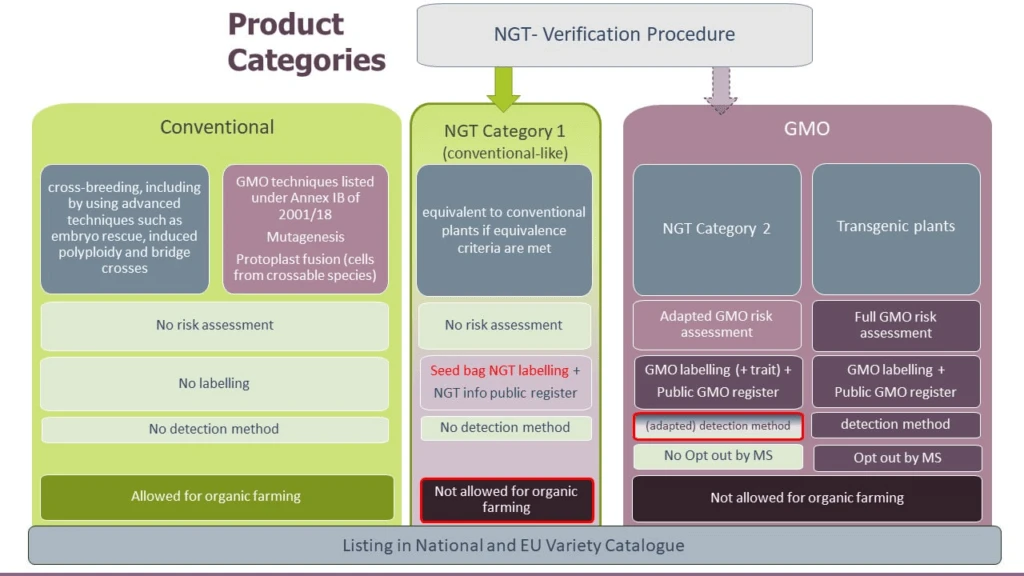Analysis: Europe’s proposed new gene editing regulations are more convoluted and burdensome than plant scientists had hoped for
Analysis: Europe’s proposed new gene editing regulations are more convoluted and burdensome than plant scientists had hoped for


In 2018, after a ruling of the European Court of Justice put the latest breeding methods under the burdensome EU GMO legislation, the Volume 5, Issue 3 edition of European Seed (Aug. 2018) was titled: “Rest in Peace Plant Breeding Innovation”. Since the EU proposed new regulations for certain new genomic techniques (NGTs) on 5 July 2023, faith in the resurrection of plant breeding innovation in the EU may just start to return. The European plant breeding and seed production sector welcomes that the Commission proposal finally recognizes the need for a differentiated regulatory approach to certain plants and products from NGTs from the GMO legislation.
The regulatory approach taken by the EU Commission does not exclude NGT plants and products from the GMO legislation but is considered a “lex specialis” with regard to the EU GMO legislation. It introduces specific provisions for NGT plants and products and with this creates a distinct product category for conventional-like NGT plants and products, including specifically blocking organic farming to utilize verified conventional-like NGT plants.
…
Breeding companies invest up to 20 per cent of their turnover in research and development. They rely on legal certainty for their investments. The verification process should therefore be based on clear criteria and the scientific expertise of member states’ competent authorities. Any interventions by member states or the Commission should be limited to scientifically justified “comments” only and not be based on political considerations.

This is an excerpt. Read the original post here

 | Videos | More... |

Video: Nuclear energy will destroy us? Global warming is an existential threat? Chemicals are massacring bees? Donate to the Green Industrial Complex!
 | Bees & Pollinators | More... |

GLP podcast: Science journalism is a mess. Here’s how to fix it

Mosquito massacre: Can we safely tackle malaria with a CRISPR gene drive?

Are we facing an ‘Insect Apocalypse’ caused by ‘intensive, industrial’ farming and agricultural chemicals? The media say yes; Science says ‘no’
 | Infographics | More... |

Infographic: Global regulatory and health research agencies on whether glyphosate causes cancer
 | GMO FAQs | More... |

Why is there controversy over GMO foods but not GMO drugs?

How are GMOs labeled around the world?

How does genetic engineering differ from conventional breeding?
 | GLP Profiles | More... |

Alex Jones: Right-wing conspiracy theorist stokes fear of GMOs, pesticides to sell ‘health supplements’




 Viewpoint — Fact checking MAHA mythmakers: How wellness influencers and RFK, Jr. undermine American science and health
Viewpoint — Fact checking MAHA mythmakers: How wellness influencers and RFK, Jr. undermine American science and health Viewpoint: Video — Big Solar is gobbling up productive agricultural land and hurting farmers yet providing little energy or sustainabilty gains
Viewpoint: Video — Big Solar is gobbling up productive agricultural land and hurting farmers yet providing little energy or sustainabilty gains Fighting deforestation with CO2: Biotechnology breakthrough creates sustainable palm oil alternative for cosmetics
Fighting deforestation with CO2: Biotechnology breakthrough creates sustainable palm oil alternative for cosmetics Trust issues: What happens when therapists use ChatGPT?
Trust issues: What happens when therapists use ChatGPT? 30-year-old tomato line shows genetic resistance to devastating virus
30-year-old tomato line shows genetic resistance to devastating virus California, Washington, Oregon forge immunization alliance to safeguard vaccine access against federal undermining
California, Washington, Oregon forge immunization alliance to safeguard vaccine access against federal undermining The free-range chicken dilemma: Better for birds, but with substantial costs
The free-range chicken dilemma: Better for birds, but with substantial costs ‘You have to treat the brain first’: Rethinking chronic pain with Sanjay Gupta
‘You have to treat the brain first’: Rethinking chronic pain with Sanjay Gupta
